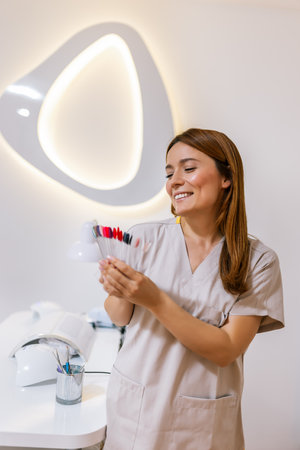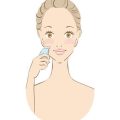Introduction to LED Therapy Devices
LED therapy devices have gained significant popularity in the UK, especially among those seeking convenient and effective skincare solutions at home. But what exactly are these devices, how do they function, and why are they becoming household essentials? In this introduction to our “Top 10 LED Therapy Devices for Home Use: UK Edition,” we’ll cover the fundamentals so you can make an informed decision.
What Are LED Therapy Devices?
LED (Light Emitting Diode) therapy devices are non-invasive tools that use specific wavelengths of light to target various skin concerns. These gadgets typically come in the form of masks, wands, or panels and are designed for regular use in the comfort of your own home.
How Do They Work?
The underlying technology involves emitting visible light—usually red, blue, or near-infrared—onto the skin. Each wavelength penetrates the skin at different depths, triggering biological processes that can promote healing, reduce inflammation, and boost collagen production. Unlike UV light, which can damage skin, LED lights are safe when used as directed.
Common Types of Light Used
| Light Colour | Main Benefits |
|---|---|
| Red | Stimulates collagen production; reduces wrinkles and fine lines |
| Blue | Kills acne-causing bacteria; helps clear breakouts |
| Near-Infrared | Promotes cell repair and reduces inflammation |
Potential Benefits for Home Users in the UK
For UK residents, LED therapy offers a practical solution for tackling persistent skin issues without frequent trips to a clinic or spa. The benefits extend beyond aesthetics; many users report improvements in confidence and wellbeing as their skin health improves. Notably, these devices are designed to fit seamlessly into daily routines—perfect for busy British lifestyles where time-saving self-care is essential.
2. Key Considerations When Choosing an LED Therapy Device
When selecting the best LED therapy device for home use in the UK, it’s crucial to evaluate several factors that directly impact both efficacy and user experience. Below is a detailed analysis tailored for British consumers, addressing the most relevant considerations.
Safety Standards and Certifications
For UK buyers, adherence to established safety standards is paramount. Devices should ideally carry CE marking and comply with UKCA (UK Conformity Assessed) requirements post-Brexit. These certifications indicate that the product meets strict health, safety, and environmental protection guidelines. Additionally, look for devices tested by independent bodies or with clinical backing from reputable sources.
Comparison of Common Safety Certifications
| Certification | Description | Relevance in the UK |
|---|---|---|
| CE Marking | Indicates compliance with EU safety standards | Recognised, but being phased out post-Brexit |
| UKCA Marking | Post-Brexit UK safety standard for most products | Essential for new products on the UK market |
| FDA Clearance | US-based medical device approval | A sign of rigorous testing, though not required in the UK |
Wavelength Options and Therapy Types
The effectiveness of LED therapy hinges on the wavelengths offered. Devices typically utilise red, near-infrared, and blue light—each targeting different skin concerns:
| Wavelength Type | Typical Nanometres (nm) | Main Benefits |
|---|---|---|
| Red Light | 630-660nm | Anti-ageing, collagen stimulation, reduced inflammation |
| Near-Infrared Light | 810-850nm | Pain relief, deeper tissue repair, improved circulation |
| Blue Light | 415-450nm | Bacteria reduction, acne control |
Select a device with customisable wavelengths or multi-spectral capability to address your specific skin or wellness needs.
Ease of Use and Practicality at Home
The ideal LED therapy device should be intuitive and easy to operate. Features such as clear instructions in English, user-friendly interfaces, lightweight design, and cordless operation are especially valued in British homes where space may be limited. Adjustable straps or flexible arms make hands-free treatments more convenient.
User-Friendly Features Checklist
- Simple controls with visual indicators
- Automatic shut-off timers for safety
- Clear display panels showing treatment modes
- Padded or ergonomic fit for comfort during use
- Mains plug compatibility with UK sockets (Type G)
- Quiet operation to suit shared living environments
Suitability for British Home Settings
Consider whether the device blends seamlessly into your daily routine and physical space. Wall-mountable options, compact storage solutions, and discreet aesthetics will ensure the unit doesn’t disrupt your home environment. Check noise levels if you’re planning evening treatments while others are present.
Key Takeaway
Prioritise certified safety, appropriate wavelength options for your goals, and features designed for UK homes when choosing an LED therapy device. These considerations will help you find a model that’s both effective and practical in a typical British household.
![]()
3. Top-Rated LED Therapy Devices Available in the UK
In recent years, LED light therapy has become increasingly popular for home use, with numerous devices now accessible to UK residents through both high street retailers and online platforms. This section provides a comprehensive roundup and review of the leading LED therapy devices that consistently receive top ratings from British consumers. We focus on models that meet UK safety standards, offer reliable performance, and are easy to purchase or ship within the United Kingdom.
Best LED Therapy Devices for Home Use: At a Glance
| Device Name | Main Features | Price Range (GBP) | Availability in the UK |
|---|---|---|---|
| CurrentBody Skin LED Light Therapy Mask | Flexible silicone, red & near-infrared LEDs, 10-minute treatments | £279-£299 | Widely available (CurrentBody, John Lewis) |
| Déesse PRO LED Mask Next Generation | Six treatment modes, medical-grade LEDs, full face coverage | £1,500+ | Selected clinics & luxury retailers |
| FOREO UFO 2 | LED light with thermal therapy & T-Sonic pulsations, app-controlled | £249-£279 | Boots, LookFantastic, Amazon UK |
| MZ Skin Light-Therapy Golden Facial Treatment Device | Five colour settings, wireless design, adjustable straps | £385-£450 | Harrods, Cult Beauty, Space NK |
| LUSTRE ClearSkin Solo | Blue LED for acne treatment, portable patches, dermatologist-recommended | £149-£175 | NHS-approved vendors, Amazon UK |
| SENSSE Professional LED Face Mask | Three light options (red, blue, yellow), affordable price point | £99-£129 | Argos, Amazon UK, Superdrug Online |
| No7 Laboratories Age-Defying LED Mask | Clinically tested red and near-infrared lights for anti-ageing benefits | £149-£180 | Boots exclusive (in-store & online) |
| CLEVERHEALTH Handheld LED Light Therapy Wand | Pocket-sized design, multiple light wavelengths for spot treatments | £39-£60 | Amazon UK, eBay UK sellers |
| Aduro 7+1 LED Face Mask | Eight treatment options including anti-acne and rejuvenation modes | £300-£350 | Aduro official site (UK delivery), Face The Future |
| The Light Salon Boost LED Face Mask | Spa-quality results at home, flexible silicone fit | £395-£425 | The Light Salon London, Space NK |
User Experience and Performance Overview
The top-rated devices on this list have been selected based on customer satisfaction across major UK platforms like Boots, John Lewis and Amazon UK. Most users praise these devices for their ease of use—often requiring less than 20 minutes per session—and visible improvements in skin texture and tone after consistent use. In particular, CurrentBody Skin’s mask is frequently highlighted by British beauty editors for its comfort and efficacy. For those seeking professional-level results at home or targeting specific concerns like acne or anti-ageing, Déesse PRO and No7 Laboratories’ mask both come highly recommended.
Main Considerations When Choosing an LED Therapy Device in the UK
- UK Plug Compatibility: All reviewed models either include a UK plug or USB charging options.
- BSP Standards: Safety certifications such as CE marking are present on all reputable products.
- Easily Accessible Aftercare: Availability of replacement parts or customer support within the UK is a key advantage.
The Takeaway: Invest According to Your Needs and Budget
The variety of LED therapy devices now available to British consumers means there’s something suitable for every skincare concern and budget. Whether you’re looking for a luxury spa-style mask or an entry-level wand for targeted treatments, these top-rated picks ensure quality outcomes without leaving your living room.
4. Expert Insights: What to Look for in an LED Device
When selecting an LED therapy device for home use, especially within the UK market, certain features and specifications can greatly influence both safety and effectiveness. Here, we have consulted with leading skincare professionals and device experts to bring you an in-depth analysis of what matters most.
Key Features to Prioritise
| Feature | Why It Matters | Expert Tip |
|---|---|---|
| Wavelength Range | The effectiveness of LED therapy hinges on precise wavelengths—typically red (630-660nm), blue (415-450nm), and near-infrared (800-880nm). Each targets specific skin concerns, from acne reduction to anti-ageing. | Opt for devices that clearly specify their wavelength range and match your primary skin concerns. |
| Intensity Levels | Adjustable intensity allows users to customise treatment according to their skin’s sensitivity and needs. Lower settings are ideal for beginners or sensitive skin types. | Look for multi-level devices for more personalised sessions. |
| Treatment Modes | Multiple modes (e.g., continuous or pulsed light) cater to different results such as collagen stimulation or inflammation reduction. | A versatile device can address a broader spectrum of skin issues. |
| Safety Certifications | Devices sold in the UK should comply with CE marking and relevant British safety standards to ensure safe home use. | Always check for official certifications before purchase. |
| User Interface & Comfort | A user-friendly design makes consistent use easier; ergonomic masks or handheld wands offer comfort during treatments. | Select a design that suits your lifestyle—masks for hands-free convenience, wands for targeted areas. |
Input from UK Skincare Professionals
Dr. Lisa Grant, a London-based dermatologist, advises: “Consistency is key with LED therapy, so prioritise comfort and ease of use. Also, ensure the device has been tested for efficacy by independent UK laboratories.”
Meanwhile, cosmetic technologist James Cartwright notes: “Check manufacturer transparency regarding technical data. Devices that provide detailed user manuals and customer support in the UK are generally more reliable.”
Additional Considerations for UK Users
- Mains Compatibility: Ensure the device supports UK voltage (230V) and has the appropriate plug type.
- Warranty & Local Support: A robust warranty and accessible UK-based customer service can make maintenance hassle-free.
- Cultural Preferences: Many Brits value discreet design—compact units or stylish masks blend seamlessly into daily routines without drawing attention.
Summary Table: Must-Have Specifications at a Glance
| Specification | Recommended Standard (UK) |
|---|---|
| Wavelength Accuracy | ±10nm of stated range |
| Treatment Timer | Automatic shut-off after 10-20 minutes |
| Safety Markings | CE marked, RoHS compliant |
| User Manual Language | English (UK) |
| Plug Type/Voltage | B/S Type G plug, 230V compatibility |
This expert guidance ensures you select an LED therapy device tailored not only to your skincare needs but also to the unique requirements of the UK market. By weighing these factors, you’ll invest wisely in a device that delivers both safety and visible results from the comfort of your home.
5. Frequently Asked Questions About LED Therapy at Home
Is LED therapy safe for home use?
Yes, LED therapy devices designed for home use are generally considered safe when used according to the manufacturer’s instructions. Most reputable brands available in the UK market undergo rigorous testing and comply with British safety standards. However, it’s important to avoid looking directly into the lights and always follow recommended session durations.
How often should I use an LED therapy device?
Usage frequency can vary depending on your chosen device and your skin concerns. For most home-use LED masks and wands, 3-5 sessions per week of around 10-20 minutes each is common. Always refer to the product manual or consult with a skincare specialist if unsure.
What results can I realistically expect?
| Concern | Expected Results | Timeframe (Est.) |
|---|---|---|
| Acne Reduction | Visible reduction in breakouts and inflammation | 4-8 weeks |
| Anti-ageing (wrinkles, fine lines) | Smoother skin texture, reduced wrinkles | 6-12 weeks |
| Redness & Sensitivity | Calmer, less reactive skin | 4-8 weeks |
| Pigmentation/Fading Marks | Lighter marks, more even tone | 8-12 weeks |
Are there any side effects?
Mild side effects like temporary redness or dryness are possible but rare when following usage guidelines. Those with photosensitive conditions or who are taking medication that increases sensitivity to light should consult their GP before starting LED therapy.
Can I use LED therapy alongside other treatments?
LED therapy is generally safe to combine with most skincare routines, including serums and moisturisers commonly used in the UK. However, avoid using immediately after strong chemical exfoliants or prescription treatments unless cleared by a healthcare professional.
Quick Reference: LED Therapy Dos and Don’ts for UK Users
| Do | Don’t |
|---|---|
| Cleansing face before use | Use on broken or infected skin |
| Follow session timing guidelines | Look directly at LEDs without eye protection (if required) |
| Store device safely and keep clean | Share your device without cleaning it properly between uses |
| Consult a GP if you have skin conditions or are pregnant | Ignore persistent irritation or unusual reactions |
If you’re considering investing in one of our top 10 LED therapy devices for home use in the UK, rest assured that these FAQs address the most common queries from British users—helping you make a well-informed decision for your skincare journey.
6. Conclusion and Final Recommendations
After a thorough analysis of the top 10 LED therapy devices available for home use in the UK, it’s clear that British consumers have an excellent range of high-quality options to suit diverse needs and budgets. The following table summarises key points from our findings:
| Device | Best For | Key Feature | UK Availability |
|---|---|---|---|
| Lumie Clear | Acne-prone skin | Blue & Red Light Combo | Yes (UK-based) |
| CurrentBody Skin LED Mask | Anti-ageing | Flexible Design, Clinical Backing | Yes (UK retailer) |
| MZ Skin Light-Therapy Golden Facial Treatment Device | Luxury users | 5 Light Modes, Stylish Look | Yes (Harrods, Selfridges) |
| SENSSE Professional LED Face Mask | Sensitive skin | Mild Heat, Adjustable Fit | Yes (Amazon UK) |
| Déesse PRO LED Mask NEXT Generation | Professional results at home | 8 Light Settings, Medical Grade LEDs | Yes (Specialist clinics) |
Summary of Key Findings
- Efficacy: Most reputable devices use clinically validated wavelengths (typically red and near-infrared) proven to target issues like ageing, pigmentation, or acne.
- User Experience: Comfort, ease of use, and flexibility in fit are crucial for consistent results.
- Safety: CE certification and compliance with UK safety standards are vital; always choose trusted brands over generic imports.
- Value for Money: Price does not always equate to effectiveness. There are budget-friendly options offering impressive performance alongside luxury models with additional features.
Practical Advice for British Buyers
- Check Local Compliance: Ensure the device is certified for UK/EU markets (look for CE mark) and has instructions in English tailored to local standards.
- Ponder Your Primary Concern: Select a device that specifically addresses your main skin issue—anti-ageing, acne control, or general rejuvenation.
- Consider After-Sales Support: Opt for products sold by established UK retailers or brands with reliable customer service and warranty policies.
- Lifestyle Fit: Look for devices with treatment times and designs that fit your daily routine—convenience encourages consistent use and better results.
Your Next Steps?
If you’re ready to invest in at-home LED therapy, review your skin goals, set a realistic budget, and cross-check shortlisted devices against the criteria above. Take time to read verified UK user reviews and consult with a dermatologist if you have sensitive skin or specific concerns. With informed choices, you’ll be on track to enjoy salon-level benefits from the comfort of your own home.


